AN ISLAND OF ISLAND

AY 2015/2016 M.ARCH THESIS, SEMESTER 1/2
TAN
ARCHITECTURE
ENVIRONMENT
UNIVERSITY OF SINGAPORE
ERIK G
DANIEL
DEPARTMENT OF
SCHOOL OF DESIGN AND
NATIONAL
THESIS ADVISOR
L’HEUREUX ASSOCIATE PROFESSOR

2

CONTENTS Introduction 5 The Rising Tide 8 Malé 11 An Island of Islands 27 Market Island 35 Mosque Island 41 School Island 47 3

4
INTRODUCTION
PARADISE noun | par·a·dise
1. a very beautiful, pleasant, or peaceful place that seems to be perfect
2. a place that is perfect for a particular activity or for a person who enjoys that activity
3. a state of complete happiness
“Paradise and the City”
The concept of paradise is one that has not been challenged in recent history. Conversations on paradise and what make up a paradise tend to associate the notion of paradise with large open spaces, a connection to nature, or a place of scenic beauty - everything the dense city is not. More often than not, the city is instead involved in discussions of the opposite condition; it is viewed as the antithesis to paradise.
Frank Lloyd Wright famously referred to the city as a “fibrous tumour”. To him, the city was a scourge; the claustrophobia, chaos, and multitude of activities taking place in the city made it a hellish environment to live in.
This two dichotomies are captured none better so than in the Maldives. While the Maldives presents itself as a tropical paradise and place of plentitude to the outside world, its capital Male has one of the highest population densities in the world, and hence one of the most intense urban conditions, totally at odds with the tranquil nature and image of paradise that the rest of the Maldives portrays. On top of that, being the lowest lying country in the world, the Maldives faces
the most palpable threat of rising sea levels that threaten to wipe out the country. Things are not as perfect as they would have tourists believe. While it is a paradise for the tourists, it is an uncomfortable and fragile home for the locals.
This thesis speculates a near future where the flooding is more prevalent and destructive. Most of the Maldives is gone, leaving Male as one of the last remaining vestiges of Maldivian land still existing. When paradise is lost, the rest of the Maldivians flock to the capital for refuge. Confronted with the natural and manmade “flood” of both water and people on the city, this project speculates a way in which the confluence of these factors forces and triggers a new way of life and how people search for their paradise in the face of it.

It explores how this confluence of factors may help to reconcile the duality of a paradise and the dense urban condition, and presents a way in which density may be seen not as a hindrance, but as an opportunity to redefine the notion of paradise in a dense urban context.

5
Laccadive Islands Maldives Islands Male LACCADIVE SEA Colombo 760km Singapore 3,380 km Puducherry 1,100 km Muscat, Oman 2,700 km Mogadishu, Somalia 3,145 km Mumbai 1,665 km Northernmost Point 330 km Southernmost Point 540 km Diego Garcia 1,280 km ARABIAN SEA British Indian Ocean Territory INDIAN OCEAN TERRITORIES 0 m Depth: 50 m 100 m 200 m 1000 m 2000 m 3000 m 500 m 4000 m 0 100 200 500 km Mogadishu, Somalia 2 00 N 75° E 80° E 85° E 90° E 17° 50 N 15° 00 N 12°50 N 10°00 N 7°50 N 5°00 N 2°50 N Equator 2°50 S 5°00 S 7°50 S 70° E 65° E 60° E 55° E Muscat, Oman 23 60 N Singapore 1 30 N Area around the Maldives 6
THE MALDIVES 0 m Depth: 50 m 100 m 200 m 0 10 20 50 km Kuramathi Male Mahibadhoo Felidhoo Nilandhoo Muli Kudahuvadhoo Fonadhoo Viligili Thinadhoo Gaafu Dhaalu Atoll Seenu Atoll Gaafu Atoll Laamu Atoll Meemu Atoll Vaavu Atoll South Male Atoll North Male Atoll Lhavyani Atoll Noonu Atoll Haa Dhaalu Atoll Haa Alifu Atoll Thaa Atoll Dhaalu Atoll Faafu Atoll South Ari Atoll North Ari Atoll Raa Atoll Baa Atoll Shavyani Atoll 1000 m 2000 m 3000 m 500 m 4000 m 5°00 N 4°00 N 3°00 N 2°00 N 1°00 N Equator 1°00 S 6°00 N 7°00 N 73°00 E 72°00 E 71°00 E 74°00 E 75°00 E 76°00 E Dhidhdhoo Kulhudhuffushi Manadhoo Naifaru Ungoofaaru Eydhafushi Funadhoo Thimarafushi Map of Maldives 7
“If carbon emissions continue at the rate they are climbing today, my country will be under water in seven years”
- Mohammed Nasheed (former president of the Maldives), 2012
THE RISING TIDE
The Maldives is at risk. The accelerating rate of climate change has caused global sea levels to rise at unprecedented rates. This has already led to the destruction of island habitats around the world, displacing populations such as those from the Bhola Island and Kutubdia in Bangladesh, and Tuvalu and Carteret Islands in New Guinea.
With an average ground level elevation of 1.5m above sea level and with at least 80% of its landmass less than a metre above sea level, the Maldives is the planet’s lowest country and thus the most susceptible to the effects of rising sea levels. Already, 14 of the 200 inhabitated islands in the Maldives are gone, while coastal erosion has rendered many other islands unliveable.
The Maldivian government has been very proactive in garnering support to halt the effects of climate change. Its many presidents in recent history have been active participants in international climate talks and vocal proponents in the fight to arrest the escalating carbon emissions rate. However, this seems to be a problem too big for the tiny island state to handle. The government has already sought other alternatives to safeguard its population from the destruction of their economy and country, the most controversial of which have been mooted involve buying up land in Sri Lanka, Australia, and India and shifting the entire population there, and building artificial floating islands to move its population to.
However, none of the present alternatives are viable long term solutions to the displacement of the Maldivian population. This thesis speculates a way in which the Maldives adapt to and live with the floods, rather than flee from it.
Ho Chi Minh Singapore Kuala Lumpur Phuket
8
Size Comparison Maldives vs Southeast Asia
EFFECTS OF RISING SEA LEVELS
BEACH EROSION
More than 97 percent of inhabited islands reported beach erosion in 2004, of which 64 percent reported severe beach erosion. More than 45 percent of the country’s 87 tourist resorts have also reported severe erosion
TOURISM
The small island beach environment, rich marine biological diversity, tropical climate, and the worldclass hotels are the unique marketable assets of the tourism sector. Maldives is the “World’s Leading Dive Destination”and coral reefs thrive in a narrow temperature range and are highly sensitive to changes in temperature. Tourism would be heavily hit by beach erosion and coral reef degradation
HUMAN HEALTH
Heat strokes, deaths due to extreme weather events, water-borne diseases, vector-borne diseases


IMPORTS

Heavy import dependency, limited food storage pose a severe food security risk to the population. The Maldives imports almost all food items other than fresh tuna and coconut. With the damage to Maldivians’ other economies, their ability to import goods will be affected

INFRASTRUCTURAL DAMAGE
The average width of inhabited islands is 566 m; and on both inhabited islands and resorts 80 percent of the powerhouses and 75 percent of communications infrastructure are located within 100 m of coastline



FISHING
Tuna movement dependent on biophysical conditions. Tuna is the primary source of dietary protein for the Maldivians, and local fish consumption exceeds 50,000 metric tons a year. Reef fish is also a significant item of the tourist resort cuisine, and impacts on reef fishery will affect tourism and communities who depend on reef fishery as a source of income.
WATER
The freshwater aquifer lying beneath the islands is a shallow lens, 1-1.5 m below the surface and no more than a few meters thick. Surface freshwater is lacking throughout the country. Freshwater aquifiers and saltwater intrusion will affect water security
9
Source: Author’s photograph
 Malé, Maldives
Malé, Maldives
10
Malé is commonly overlooked or simply ignored when discussing the Maldives. To the majority of visitors to the Maldives, the city is merely the transition point from which they arrive and disperse to the other islands. The city is the side of Maldives
the already severe problems that afflict it, the gradual loss of its livelihood and the increase in demographic pressure caused by Maldivians flocking to the city as an escape for the destruction of their islands will intensify the chaos and clautrophobia already in the city.

11
MALÉ 0 m Depth: 5 m 10 m 20 m 50 m 100 m 200 m 30 m 0 100 200 300 400 500m A B C D E H G F
12
Topographical map of Male
A 0 100 200 500m 50 D C B E H G F 13


PRESENT 1.97 km2 1922 1974 1.42 km2 1.07 km2 1922 1.07 km2 1974 1.42 km2 PRESENT 1.97 km2 Land
14
reclamation in Malé
Typical Urban Block
TOPOGRAPHICAL CONSTRAINTS
Much of Male’s problems are a result of its topographical constraints.
Horizontally:
Male has a history of land reclamation, but it has since reached its limit. The city has grown to the limit of its topography, beyond which the land slopes away very steeply, so they cannot continue expanding outwards to grow the city’s footprint.
Vertically:
The presence of a freshwater aquifer 1.5m below the surface of the city means that buildings on the island cannot pile their foundations deeper than 1.5m, which imposes an artificial height limit of 10 stories on all buildings in the city
1.5 m 10 Storeys
15


MALÉ Population Density: 64,000 people / km2 127,079 people in 1.97 km2 7.35 people / unit 14,107 households
Area / person: 41.1 m2 SENGKANG,SINGAPORE Population Density: 52,060 people / km2 206,680 people in 3.97 km2 3.86 people / unit 53,458 units
Area / person: 64.0 m2 m2 Population Density: 52,060 people / km2 206,680 people in 3.97 km2 3.86 people / unit 53,458 units SENGKANG,SINGAPORE Buildable Area / person: 64.0 m2 Population Density: 64,000 people / km2 127,079 people in 1.97 km2 7.35 people / unit 14,107 households Buildable Area / person: 41.1 m2 MALÉ 16
Buildable
Buildable
Buildable
Buildable

PLAINE MONCEAU, PARIS Population Density: 21,200 people / km2 2,241,346 people in 105.4 km2 1.9 people / household 1,179,655 households m2
Area / person: 107.3 m2 EXIAMPLE, BARCELONA Population Density: 53,000 people / km2 53,000 people in 1.04 km2 2.30 people / unit 22,980 households
Area / person: 23.9 m2 m2
Buildable
Buildable
Area / person: 107.3 m2
Density: 21,200 people / km2 2,241,346 people in 105.4 km2 1.9 people / household 1,179,655 households PLAINE MONCEAU, PARIS
Area / person: 107.3 m2
Density: 53,000 people / km2 53,000 people in 1.04 km2 2.30 people / unit 22,980 households
Population
Buildable
Population
Area / person: 23.9 m2
BARCELONA 17
EXIAMPLE,
Shavyani Atoll
Haa AlifuAtoll
Haa Dhaalu Atoll
Noonu Atoll
Raa Atoll
Baa Atoll
Lhaviyani Atoll
1,370 m
2,070 m
North Ari Atoll
North Male Atoll
South Male Atoll
South Ari Atoll
Vaavu Atoll
Area: 1.97 km2
Elevation: 1.8m
Population: 83,400 male; 69,950 female




























































Faafu Atoll
Dhaalu Atoll
Meemu Atoll
Thaa Atoll
Laamu Atoll
Gaafu Dhaalu Atoll
Gaafu Atoll
Gnaviyani Atoll
Seenu Atoll
73 00’E 18
No. of in-migrations annually
< 1000 people
1000 - 2000 people
2000 - 3000 people
3000 - 5000 people
5000 - 6000 people
>6000 people
Male
19


Sea level rise: 0.0m
Sea level rise: 2.5m
Sea level rise: 5.0m



22
Population Density: 138,732 people / km2
273,304 people in 1.97 km2
Gross Floor Area: 10.24 km2
No. of Schools: 28
No. of Mosques: 21
No. of Fields: 10
No. of Hospitals: 8
MALE MAX
Population Density: 203,240 people / km2
400,383 people in 1.97 km2
Gross Floor Area: 15.00 km2
No. of Schools: 41
No. of Mosques: 31
No. of Fields: 15
No. of Hospitals: 12
EXISTING CITY
Population Density: 64,000 people / km2
127,079 people in 1.97 km2
Gross Floor Area: 4.76 km2
No. of Schools: 13
No. of Mosques: 10
No. of Fields: 5
No. of Hospitals: 4
NEW CITY Population Density: 138,732 people / km2 273,304 people in 1.97 km2 Gross Floor Area: 10.24 km2 No. of Schools: 28 No. of Mosques: 21 No. of Fields: 10 No. of Hospitals: 8
NEW CITY 23


24


25

26
AN ISLAND OF ISLANDS
When the flood inundates the city, it isolates each urban block, turning them into islands. This project embraces the opportunity that this division of the city creates. Each urban island will behave autonomously, acting as their own architects to respond to the flooding. The myriad different responses and possible scenarios that occur creates a diversity of experiences.

In the island of islands, the density which was previously seen as counter to the creation of paradise, is instead vital as a generator of diversity that creates not just a singular paradise, but a multitude of paradises.
This introduces a way in which the elements of the city: density, diversity, morphology, and complexity come together to create a new form of urban paradise that defines itself in different terms. It is a paradise for everyone and no one; within the city, people have to search for their own paradise amid the spectrum of possibilities.
27
The Maldives
28
RULES
To order the development of the city, a series of rules are established, within which the different island plots will aggregate and grow. The rules are:
1. Shops situated on the ground floor have to be replicated in the plot
2. Alternative modes of circulation through the mass to connect the different buildings laterally
3. Buildings can only be built to a maximum height of 10 stories
4. Within a number of buildings, there must be a void between the buildings to allow light through the canopy and into the lower buildings within the mass.
5. Every plot is autonomous and in charge of its own survival
29
Mosque Island School Island Park Island School Island Market Island Theater Island Mosque Island Port Island School Island Hospital Island 30
Prison Island Sports Island Breakwater Island Mosque Island Park Island Hospital Island Park Island Market Island Dock Island Cemetery Island 31
Existing City Aggregation of the city 32
33
34
Market Island Market Island
35
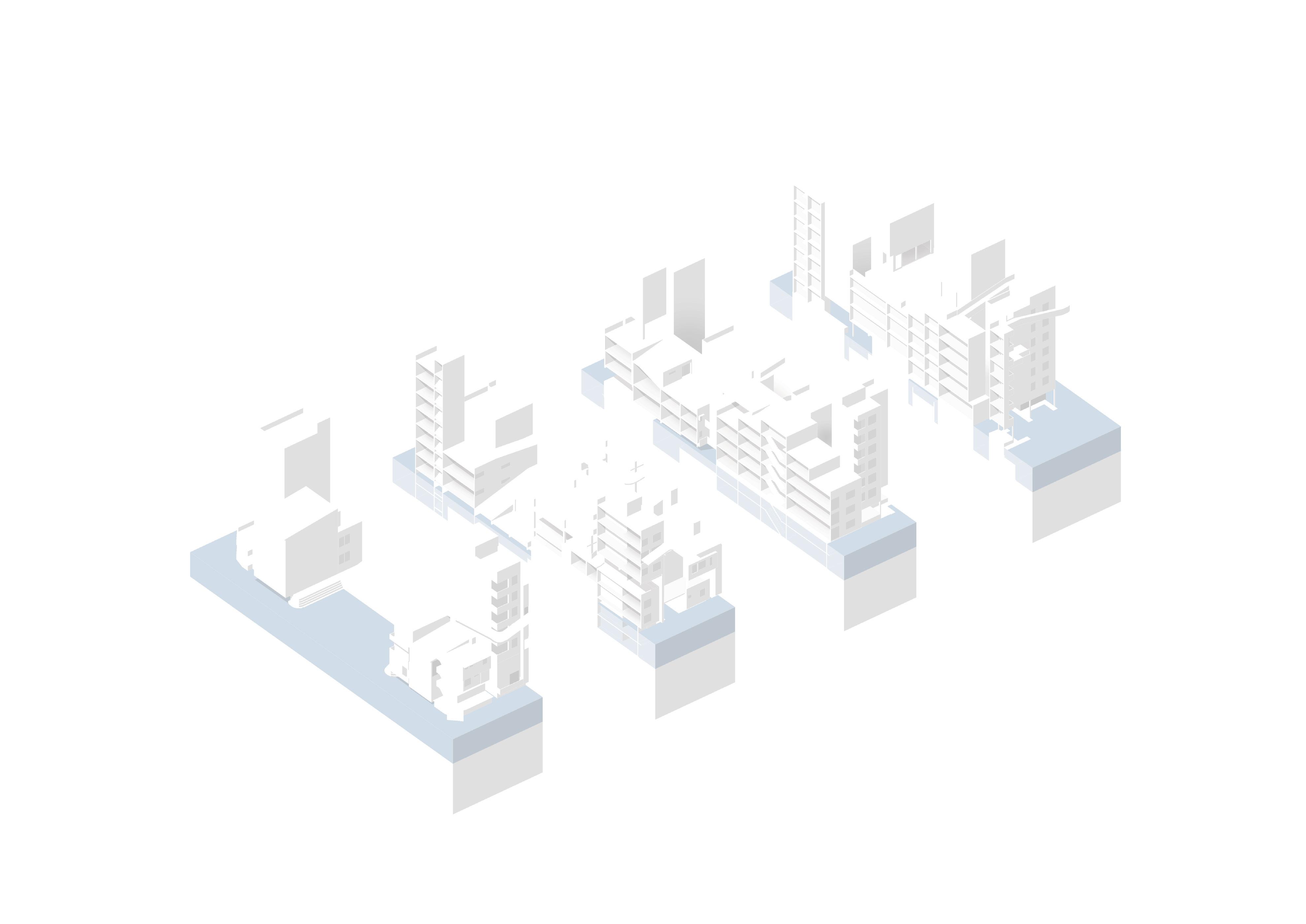
36
MARKET ISLAND
Due to the need to constantly move goods in and out, one of the challenges of Market Island is to move vertically and to maintain a connection with the port of the island, from which goods will be unloaded from boats coming from the port. Also, the constant sounds and smells of the market necessitate ventilation and large open areas on which the market can operate on.
My architectural proposal to amplify market island is a series of ramps and platforms that interconnect, allowing the market to take place vertically. Existing rooftops are combined, enlarged, or appropriated for use as the market platforms. Ramps are formed by bridging across platforms or by cutting into exisiting flat roofs to create pitched roofs that also function as ramps. These ramps allow for the movement of goods and people from the port to the markets across the complex new urban roof topography.

37


40
41
Mosque Island Mosque Island
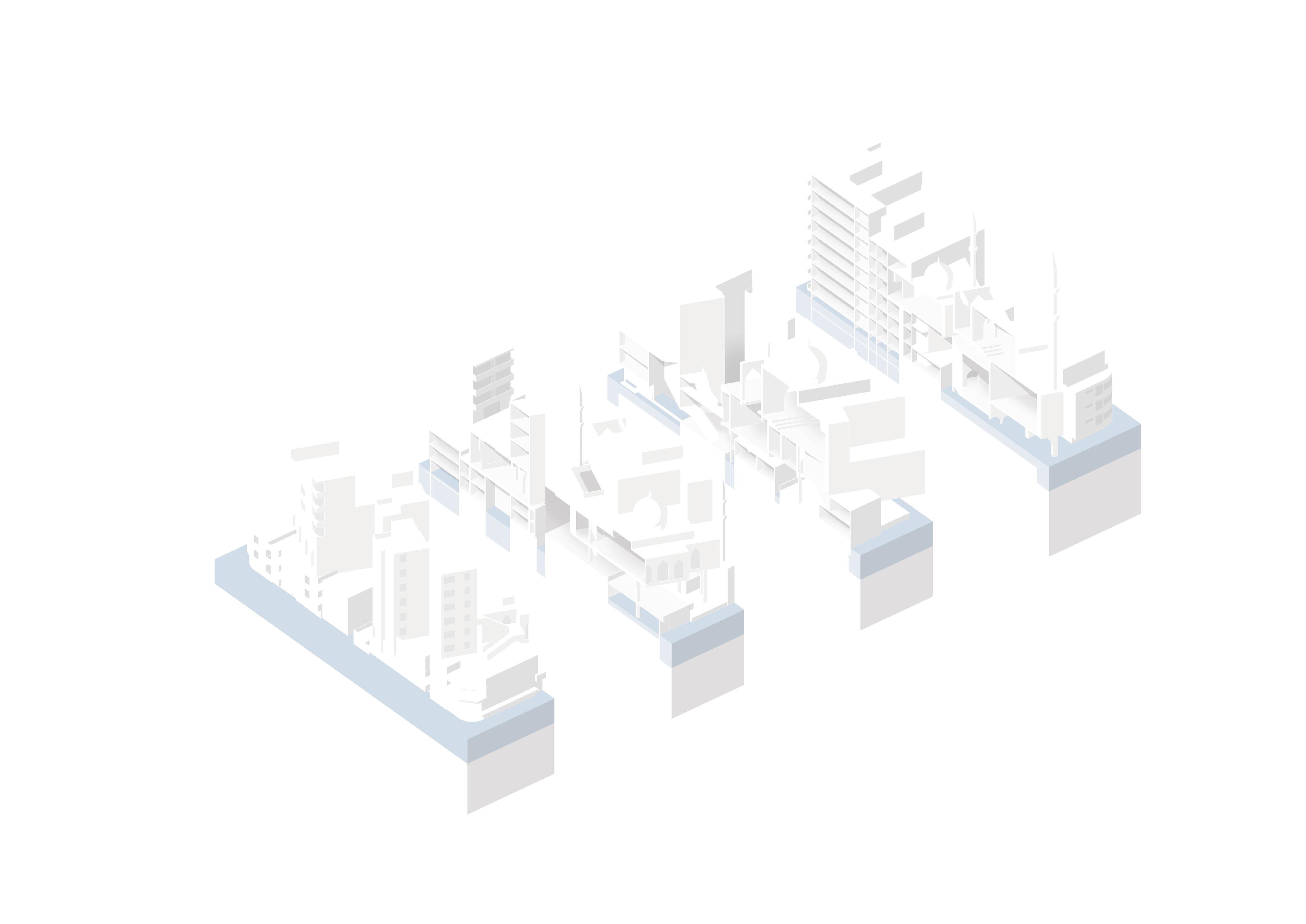
42
MOSQUE ISLAND
On Mosque Island, the challenge is to create the cavernous, interior volumes and distribute them vertically. Mosques are a vital communal program in the entirely Muslim population of Male and so experience a high volume of traffic, so wide walkways and plazas for the large number of worshippers are necessary. The orientation of these large cavernous volumes towards Mecca cause a collision and interpenetration between the volumes and the existing urban fabric.
My architectural proposal to amplify mosque island is a staggering and positioning of the mosques on top of each other to ensure that each receive sufficient daylight and ventilation, as well as to create a series of wide walkways that connect the mosques to each other, and from Mosque island to other islands. The large cavernous mosque volumes are contrasted with smaller, fine-grained buildings that house the new population and provide the restaurants, cafes, and shops that typically support the large population on prayer days.

43


46
School Island
47
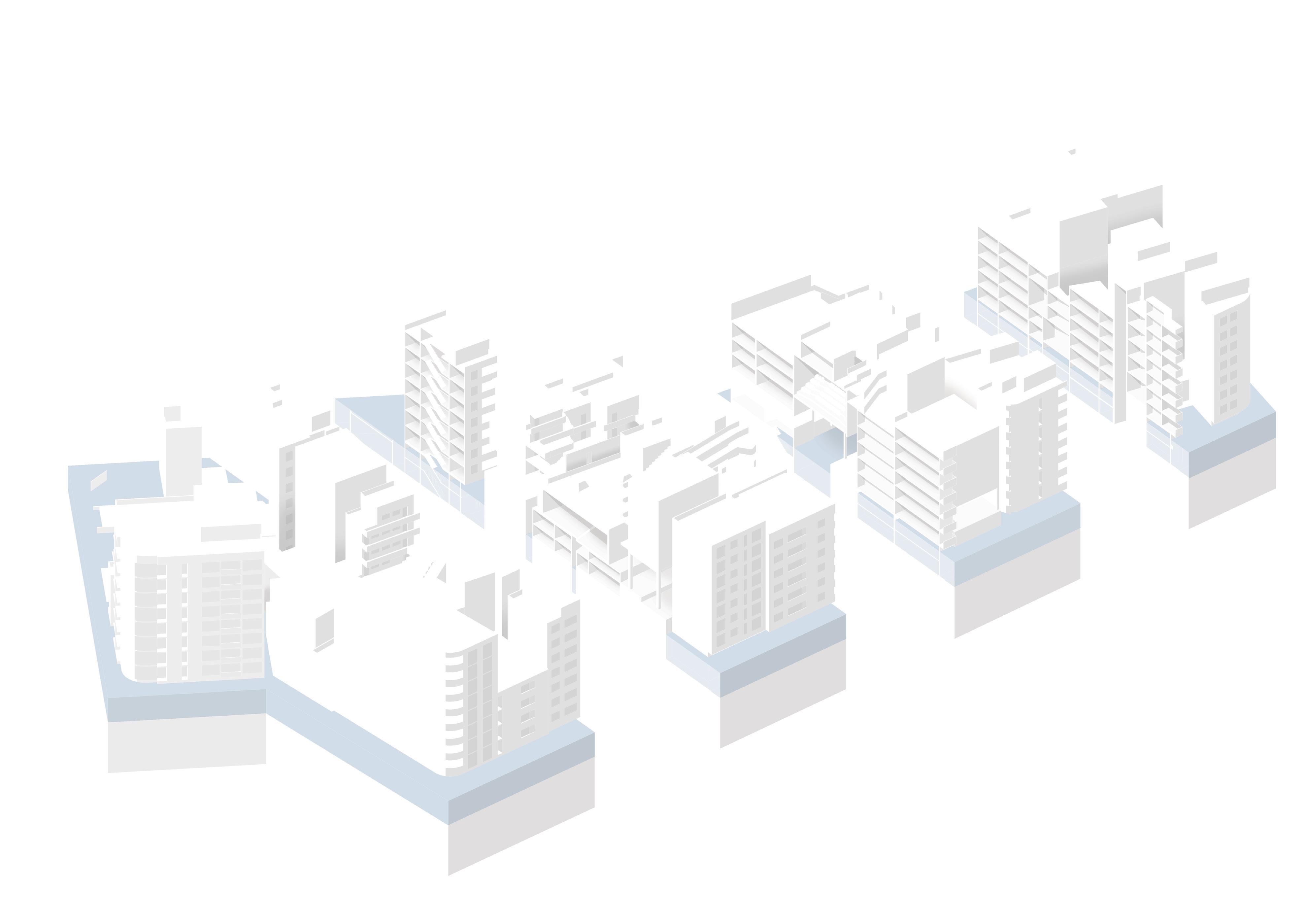
48
SCHOOL ISLAND
Schools are typically fenced compounds designed to provide a controlled safe environment within which students can interact in. Within an urban mass, this proves to be a challenge, as the number of openings and proximity of buildings to each other do not easily facilitate the demarcation. Within the compound, the need for large volumes to house functions such as an auditorium, lecture theaters and assembly areas are also in contrast with the smaller volumes needed for classrooms.
The architectural proposal to amplify school island is to use the smaller volumes to create a break from the urban fabric. They form a “wall”, which creates the demarcation which defines the boundaries of the school within the urban mass. By forming a perimeter, they also define the larger volumes within, and create a focal point that connects all the classrooms.
School island is a paradise for children, a safe compound within which youth and exuberance can unfold.

49


The Hidden City
52
Park Island
53
Sports Island
54
Breakwater Island
55
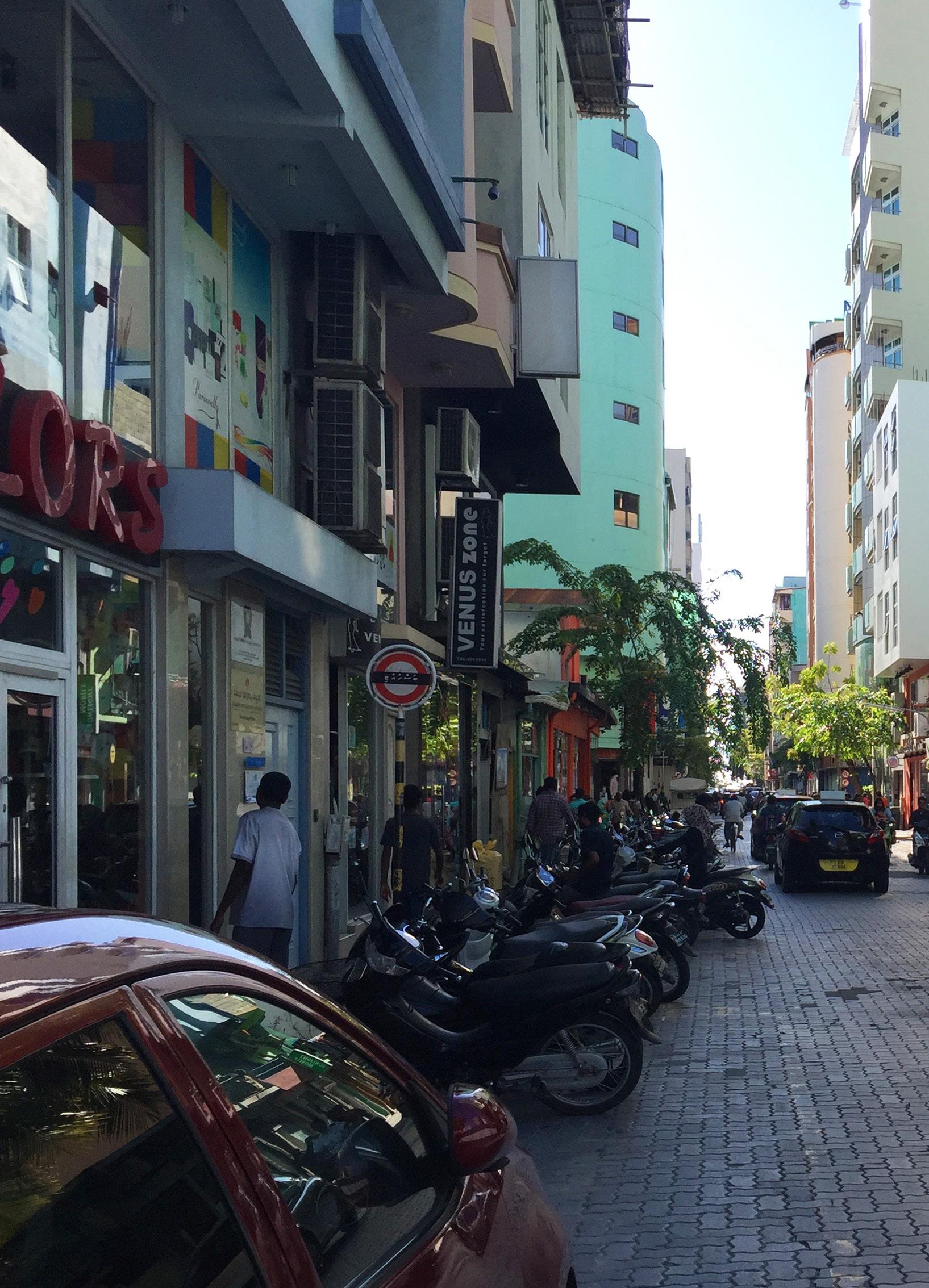
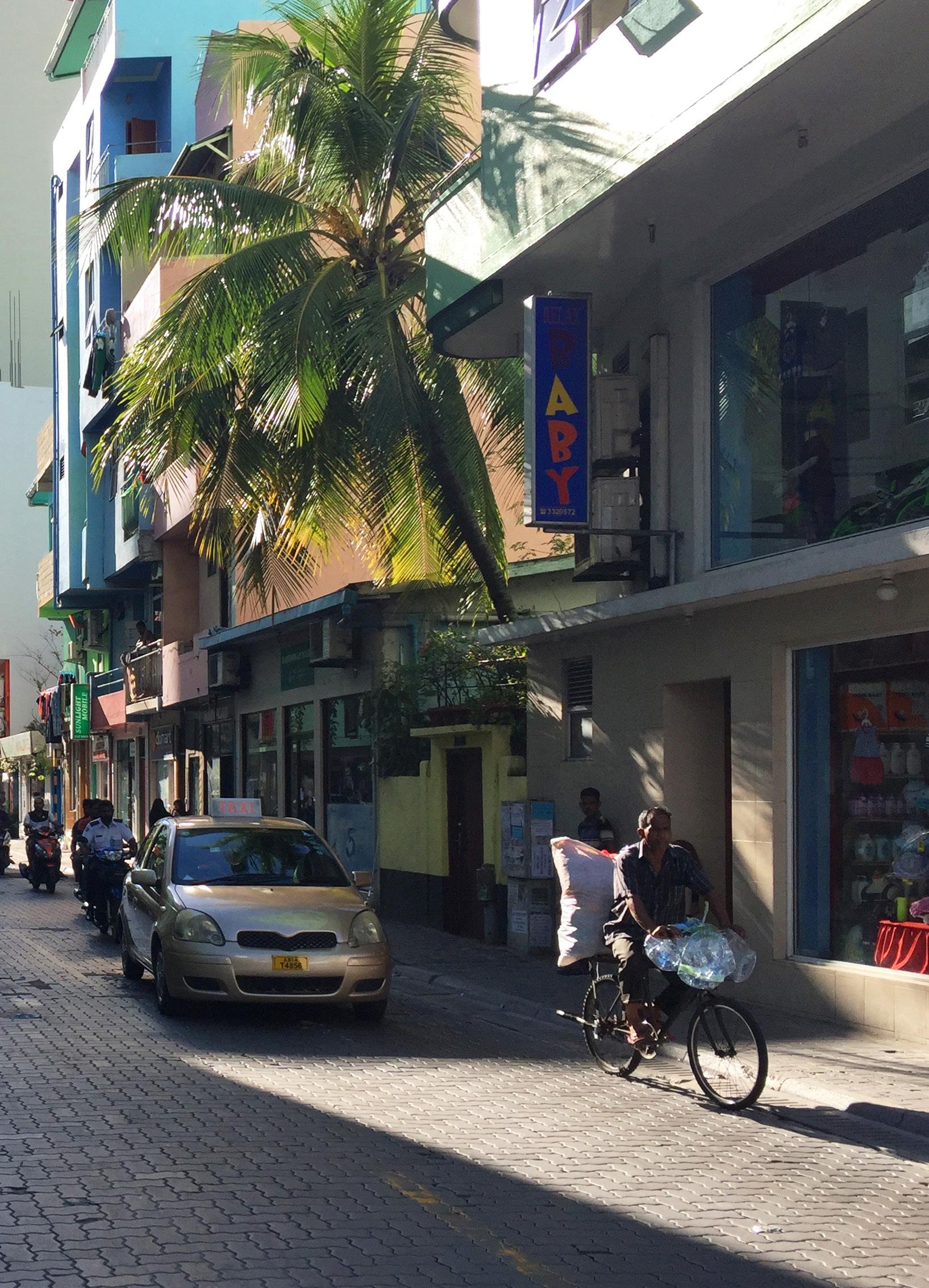
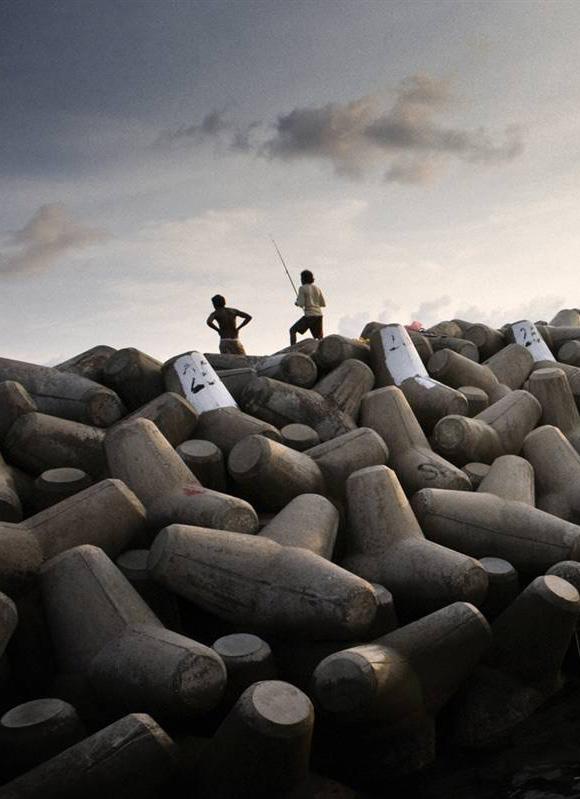
Source: “A Paradise In Peril: The Maldives – Consequences | NOOR”. Noorimages.com. N.p., 2016. Web. 24 Apr. 2016.
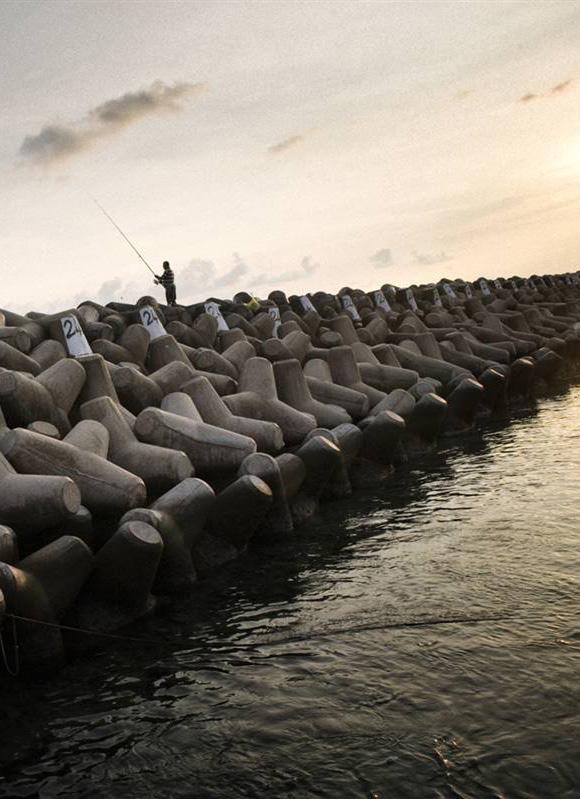
End.














 Malé, Maldives
Malé, Maldives





















